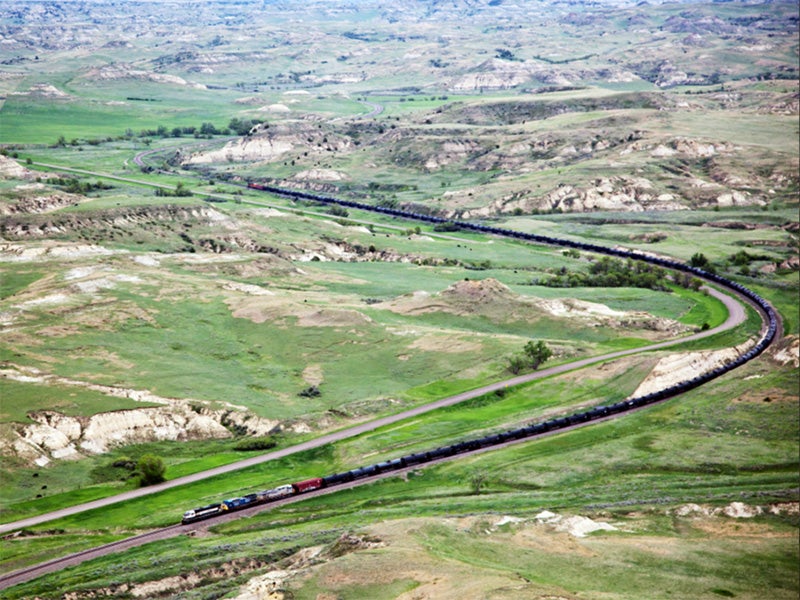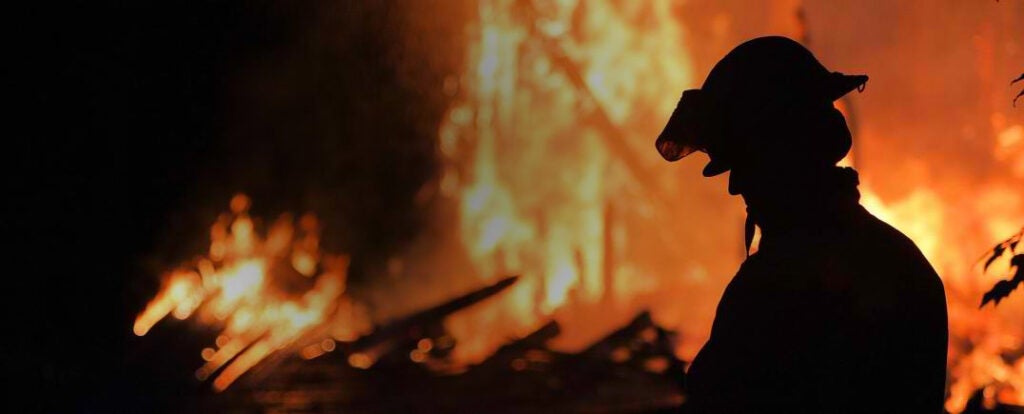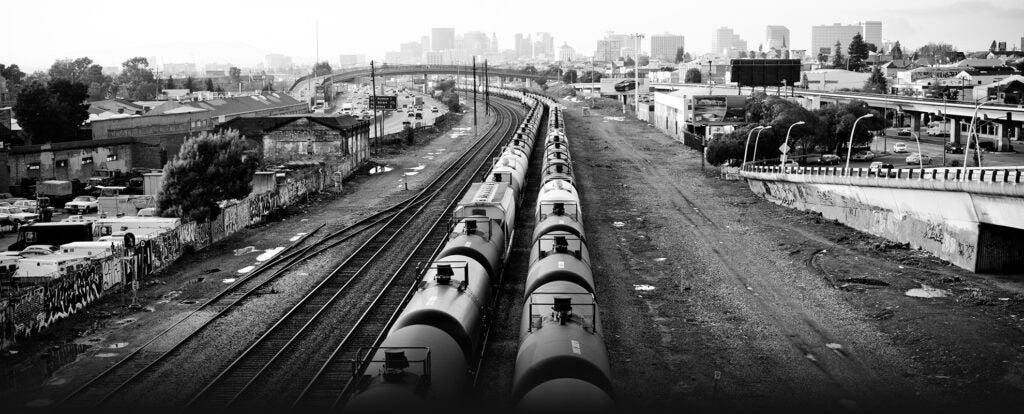Challenging Weak Safety Standards For Oil Trains
The surge in U.S. and Canadian oil production, much of it from Bakken shale and Alberta tar sands, led to a more than 4,000 percent increase in crude oil shipped by rail from 2008 to 2013, primarily in trains with 100 to 120 oil cars that can be over 1.5 miles long. The result has been oil spills, destructive fires, and explosions when oil trains have derailed.
Case Overview
In the wake of a spate of fiery derailments and toxic spills involving trains hauling volatile crude oil, a coalition of conservation organizations and citizen groups are challenging the U.S. Department of Transportation’s (DOT) weak safety standards for oil trains. Less than a week after the DOT released its final tank car safety rule on May 1, a train carrying crude oil exploded outside of Heimdal, North Dakota. Under the current standards, the tank cars involved in the accident would not be retired from crude oil shipping or retrofitted for another 5 to 8 years.
Earthjustice has filed suit in the 9th Circuit challenging the rule on behalf of ForestEthics, Sierra Club, Waterkeeper Alliance, Washington Environmental Council, Friends of the Columbia Gorge, Spokane Riverkeeper, and the Center for Biological Diversity.
Rather than immediately banning the most dangerous tank cars—DOT-111s and CPC-1232s—that are now used every day to transport volatile Bakken and tar sands crude oil, the new standards call for a 10-year phase out. Even then the standard will allow smaller trains—up to 35 loaded tank cars in a train—to continue to use the unsafe tank cars.
The new rule fails to protect people and communities in several major ways:
- The rule leaves hazardous cars carrying volatile crude oil on the tracks for up to 10 years.
- The rule has gutted public notification requirements, leaving communities and emergency responders in the dark about the oil trains and explosive crude oil rumbling through their towns and cities.
- New cars will require thicker shells to reduce punctures and leaks, but retrofit cars are subject to a less protective standard.
- The standard doesn’t impose adequate speed limits to ensure that oil trains run at safe speeds. Speed limits have been set for “high threat urban areas,” but very few cities have received that designation.
The National Transportation Safety Board has repeatedly found that the DOT-111 tank cars are prone to puncture on impact, spilling oil and often triggering destructive fires and explosions. The Safety Board has made official recommendations to stop shipping crude oil in these hazardous tank cars, but the federal regulators have not heeded these pleas. Recent derailments and explosions have made clear that newer tank cars, known as CPC-1232s, are not significantly safer, and the Safety Board has called for a ban on shipping hazardous fuels in these cars as well.
The recent surge in U.S. and Canadian oil production, much of it from Bakken shale and Alberta tar sands, led to a more than 4,000 percent increase in crude oil shipped by rail from 2008 to 2013, primarily in trains with 100 to 120 oil cars that can be over 1.5 miles long. The result has been oil spills, destructive fires, and explosions when oil trains have derailed. More oil spilled in train accidents in 2013 than in the 38 years from 1975 to 2012 combined. ForestEthics calculates that 25 million Americans live in the dangerous blast zone along the nation’s rail lines.

Case Updates
Case page created on May 14, 2015.

